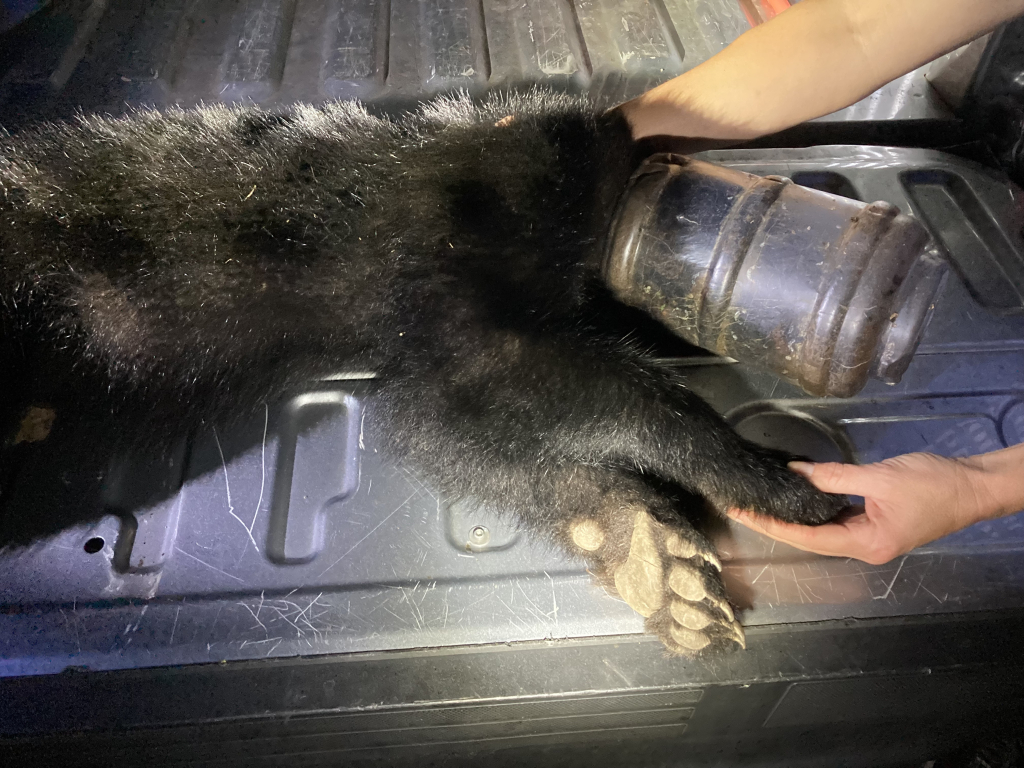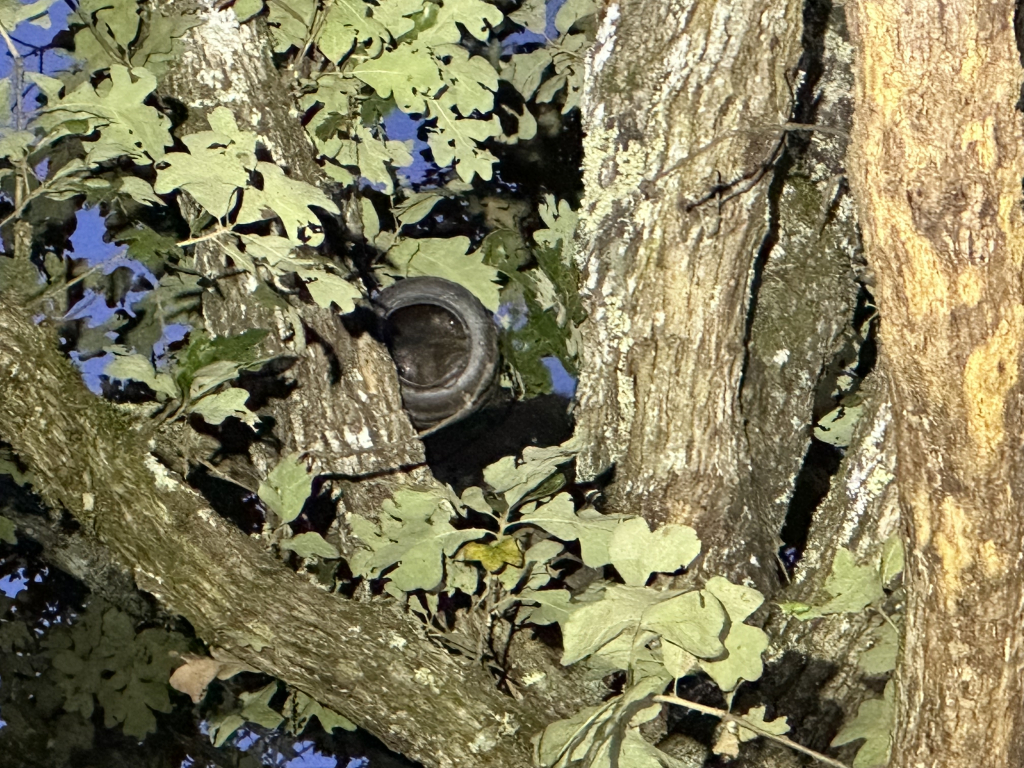
-TWRA is stressing the importance of being BearWise after removing a plastic pet feeder from a bear cub’s head this week.
TWRA received the first report on August 14, when a resident near Chilhowee Lake spotted a sow bear and four cubs on her porch with one having a container stuck on its head. TWRA Black Bear Support Biologist Janelle Musser responded and promptly began a trapping effort. She was able to lure the cub into a trap, but it was unable to trigger it with its mouth due to the container on its head. She moved the trap each time a new sighting was reported, even trying a different style trap with a foot plate trigger but at this point, the mother became trap shy and became difficult to pattern.
On Tuesday night, a resident who had been following the situation reported that the cub was in a tree and Musser was able to dart the animal and remove the container. She says, “Darting bears in trees is not standard practice and is only done in an emergency. This cub would not be able to continue surviving like this.”
Despite the long entrapment of its head, the bear did not have any abrasions from the container and was in relatively good shape other than his ears being mashed down to his head. The cub is now recovering at Appalachian Bear Rescue in Townsend. The capture of this bear cub would not have been possible without help from the community reporting sightings, allowing traps on their properties, and being an extra set of eyes, ears, and hands.
BE BEARWISE
Garbage, birdseed, and pet food are the main attractants that bring bears into residents’ yards, near their homes, and on their porches. In this case, an automatic pet food feeder left out for dogs or cats attracted the bear cub which could have died without intervention.
This is not the first time this has happened, and it won’t be the last unless people follow BearWise practices. Tennessee and other states see incidents like this when bears rummage through garbage. This time of year, bears are bulking up for winter and are trying to eat upwards of 20,000 calories a day. This makes attractants like garbage, birdseed, and pet food even more alluring to bears. Their sense of smell leads them to the attractants, and they can get an easy, high-calorie meal in a one-stop shop instead of spending hours foraging for acorns, bugs, and other natural foods. In addition to incidents like this, bears that eat non-natural foods around people and homes become accustomed to humans and often must be humanely euthanized to keep people safe.
Residents in bear country can expect to see higher activity levels this time of year and should secure their garbage, remove their birdfeeders, feed pets for limited time periods, and remove all bowls. This will help keep people, pets, and bears safe. For more information on bears and how to secure attractants in a bear-resistant way, please visit https://bearwise.org/.





















